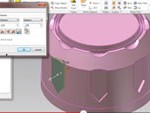The Basic First Step after the Great Idea
 You have the great idea. It may not change the entire world (although it might) but it will definitely change your world by bringing something into the world that wasn’t there before, or that truly is the better mousetrap.
You have the great idea. It may not change the entire world (although it might) but it will definitely change your world by bringing something into the world that wasn’t there before, or that truly is the better mousetrap.
Either way there is something that has to happen immediately after the great idea for most of us to do anything with it.
How To Make An Invention, otherwise known as prototyping, is about getting the idea out of your head onto a sketchbook and physical object.
How To Make An Invention Prototype
Once an individual comes up with the great idea, the next step is to make a working prototype. Often people have great ideas that might work or would sort of work but they do not turn them into anything concrete to make sure they do work. After you get something that works, then you can figure out if it is worth using. You can figure out the costs, the benefits, what types of materials could make it stronger, better, and more effective. You can streamline and improve upon something that works. Until you have something that works you cannot work with it.
Why do you have to have a prototype again?
The prototype is the first stage of invention design. In summary:
- To show that your great idea works
- To have something to protect, whether it is a design or a completely new invention
- To have something to market and sell.
How To Get To A Prototype?
Once you have the great idea there are a lot of different ways to get the first run prototype.
Make An Invention Yourself
You can learn how to make an invention yourself both physically or digitally.
Build It Physically
A lot of people, including many who are not mechanically inclined, find a way to make their own prototype in their garage with some simple or not so simple tools. This is usually a more economical way to go about the invention design process.
Build It Digitally
Did you know that there is a lot of excellent inventor software available that allows you to digitally build and construct your prototype.
Leverage the Community
Local schools and businesses can be great sources for resources, information and skills that can enable you to build your invention design prototype, and some of these people the local community college may have some students looking to build something as a school project, or the local college with an advanced engineering program or art program may have some students too. For the computer savvy there are 3-D printing options that you can work with to develop highly precise parts. There are businesses that may let you leverage some of their staff like auto shops. Confidentiality agreements should be part of the process to protect your idea. This can also be very economical because you can leverage the experience of people who have knowledge you do not without paying them a lot.
Hire Professional Prototype Builders
This can be a lot more expensive than other routes. On the other hand if the idea is fully formed there can be benefits as well. Often these businesses have marketing and other types of business ties to plug into that you may not have yourself. And they may know more about getting a prototype made than you do. Just keep an eye on the costs.
Ultimately there are a variety of ways to get your invention design made. Just get it made so you can get onto the great part, which is selling your new invention.


 There are a lot of websites out there offering basic inventor assistance regarding patenting and other types of advice regarding your inventions. Some are certainly helpful at getting started and perhaps providing some introductory information as to patentability and other alternatives an inventor might pursue to protect an invention.
There are a lot of websites out there offering basic inventor assistance regarding patenting and other types of advice regarding your inventions. Some are certainly helpful at getting started and perhaps providing some introductory information as to patentability and other alternatives an inventor might pursue to protect an invention.




 It’s not a cliche, nor is it some kind of marketing gambit, to say that anyone can be an inventor. Learning how to be an inventor is a process just like learning how to ride a bicycle or learning how to draw. Some people say that you need some special kind of ‘talent’ to draw, that it is innate and that you can’t ‘learn’ it. Yet many books, courses and educators have
It’s not a cliche, nor is it some kind of marketing gambit, to say that anyone can be an inventor. Learning how to be an inventor is a process just like learning how to ride a bicycle or learning how to draw. Some people say that you need some special kind of ‘talent’ to draw, that it is innate and that you can’t ‘learn’ it. Yet many books, courses and educators have